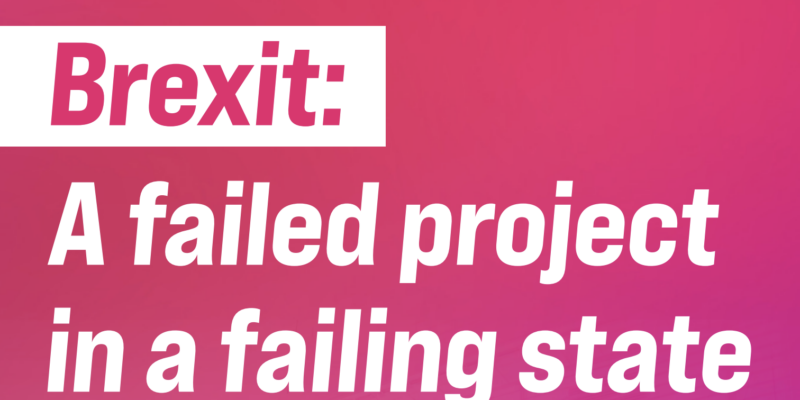The UK has lost out on billions in infrastructure investment after Brexit
The government claims to have freed the UK from ‘liabilities’ for the Next Generation EU programme. But the UK would have been a major recipient of this new funding.

The UK government has recently argued that leaving the EU has meant ‘that the UK has not had to contribute to the significant new liabilities arising from the EU’s Covid response including, for the first time, the EU’s borrowing of up to €750 billion between 2021–24’. The claim can be found a new report published to extoll ‘the benefits of Brexit’ as the government seeks to shore up its domestic support after floundering from crisis to crisis.
While the document is not short of misleading arguments, this one is particularly problematic set against how successful the EU’s new scheme has been. Not only has the UK missed out on billions of pounds of additional spending on infrastructure, but the EU’s borrowing costs have been exceptionally low. Such is the demand for EU bonds, considered a highly secure asset in global markets, that the interest rate was negative for much of 2021. In the counter-intuitive world of negative interests rates, this means investors were paying the EU to lend them money.
Funding for each EU member for the Recovery and Resilience Facility (the biggest component of the new programme) is calculated through a formula based on population, gross national income per capita and their 2015 – 2019 unemployment rates compared to the EU average. France, which has a similar population size and per capita income to the UK, is due to receive €32 billion through this facility. Although the UK’s lower unemployment rate would have meant it received less money, the economy is still missing out on billions in new investment.
Seen in the context of the UK government commitment to ‘levelling up’, the funding could have addressed the absence of new money in its recently published white paper setting out its strategy for regional inequality.
Although the UK’s borrowing costs are low (its government bonds currently have a 1.4% yield and an AA credit rating with Standard & Poor), the terms of its borrowing do not match the next generation EU recovery bonds, which markets have treated as a highly secure, ultra-safe financial asset. With pressure growing in the EU for this kind of shared borrowing to be normalised, this would give the bloc a long term competitive advantage over the UK.
Of course, this should not be read as a justification for restricting UK government spending. Under Boris Johnson the Conservatives have moved away from the disastrous austerity policies associated with his predecessors. But they still make use of cost arguments to hold back vitally needed investment, for instance, when they abandoned Northern Powerhouse Rail in November last year, in favour of a much less ambitious plan for the national railways.
This case of lost European investment funds serves as another reminder that the two big goals that won the Conservative party the 2019 general election, levelling up and delivering Brexit, were in conflict with one another.
Leaving the EU does not make levelling up impossible, but it does make it harder, placing obstacles in the way of what is already a challenging policy agenda, which the government has not committed to with enough ambition.
February 7, 2022
Brexit Spotlight is run by Another Europe Is Possible. You can support this work by joining us today. The website is a resource to encourage debate and discussion. Published opinions do not necessarily represent those of Another Europe.





